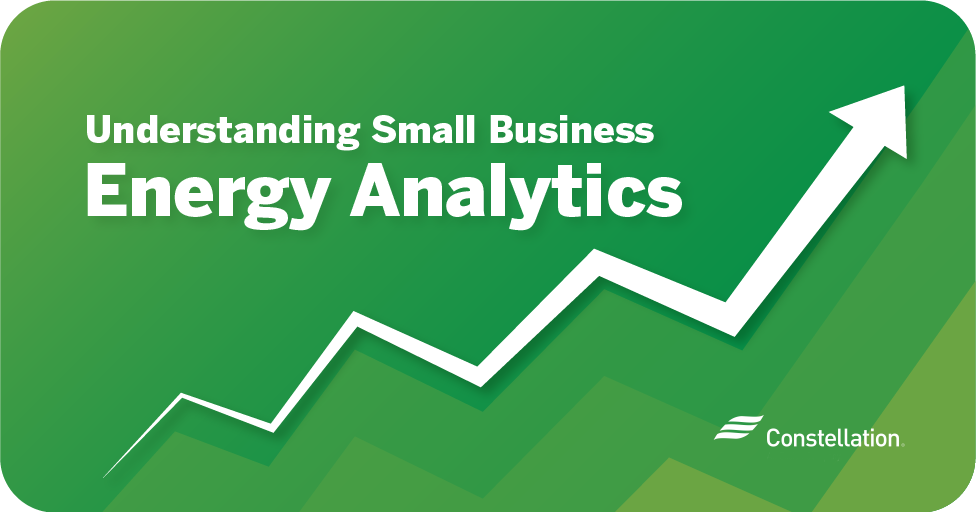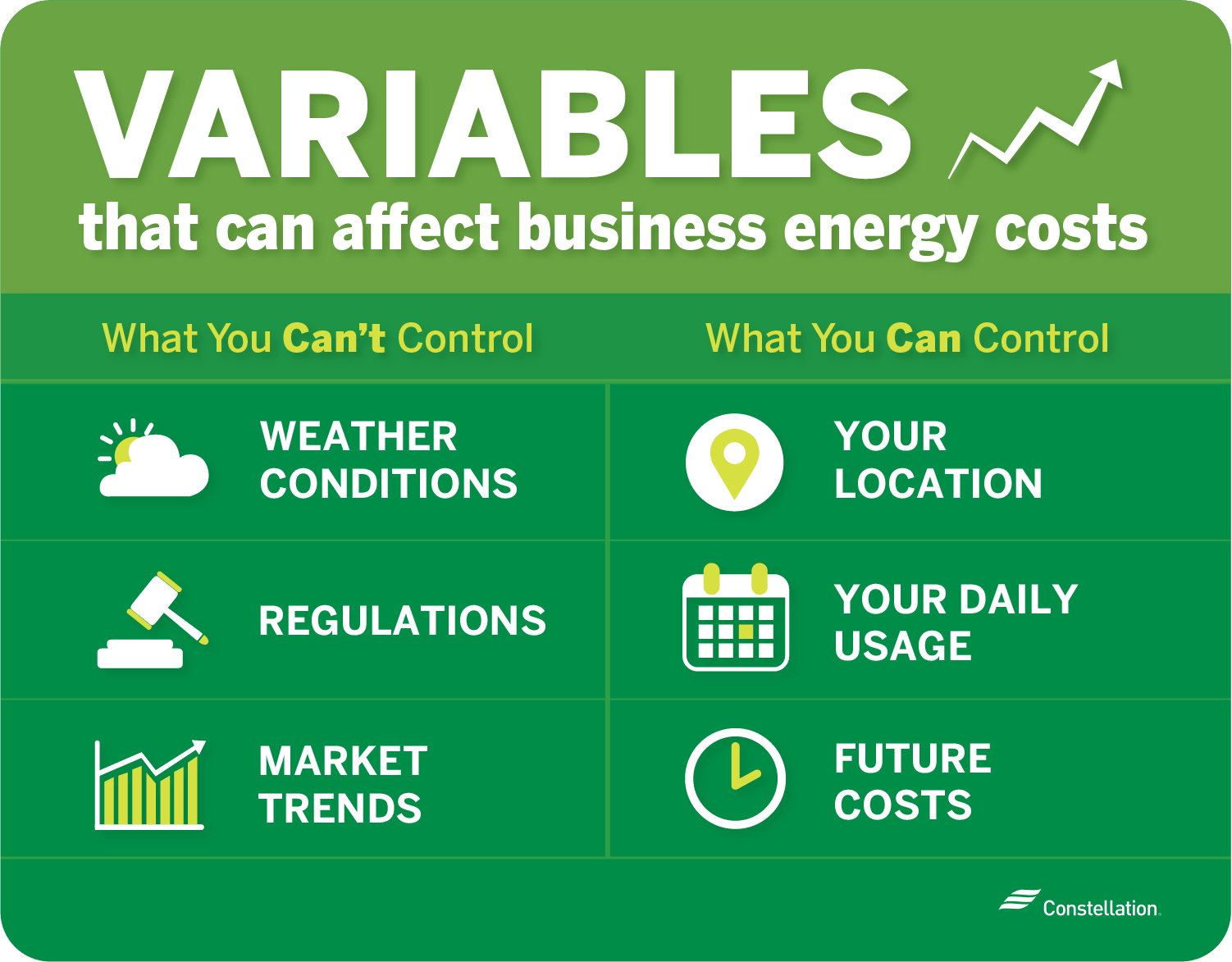
- Category:
Small Business Energy Savings -
Last updated:
February 22, 2022
Harnessing Commercial Energy Analytics for Your Small Business
Business takes energy. Your small business might make do with a lamp and a laptop, but most businesses run on considerably more electricity. Although a metal induction plant might use enough electricity to power a small town, more common high-energy small businesses include car dealerships, with lighting that’s always on and large spaces to heat or cool, and food businesses running refrigeration and cooking equipment.
While energy consumption varies by industry, paying attention to your particular patterns and costs can make a big difference. That’s where a small-business energy monitoring system and commercial energy analytics come in.
What is commercial energy analytics?
Commercial energy analytics is the scientific analysis of business energy data that’s recorded and processed through a combination of sensors, controllers, software and interfaces. That analysis is then used to monitor, manage and optimize energy consumption. Energy users and suppliers can track key performance indicators for production, distribution and consumption to achieve maximum energy efficiency, benchmark trends and efficiently plan for the future.
Why is energy analytics important for my business?
Tracking and analyzing business energy data helps you with control, planning and productivity, as well as minimizes environmental impact. For example, small business energy analytics lets you see how you’re consuming energy so you can make changes that cut waste or shift consumption to different times of day or seasons of the year to save on energy use. Tracking past patterns will help you with forecasting and budgeting for long-term efficiency.
What should I track using commercial energy analytics?
Track your energy use with an energy monitoring system. These solutions capture business energy data from everything that consumes power, including lighting, equipment, electronics and HVAC systems. You can collect data at different times depending on your information needs.
With an energy monitoring system, you can track your energy costs:
- Per day
- Per week
- Per month
- Per year
You may wish to monitor high-use HVAC systems daily. For other systems, however, it may be sufficient to track weekly, monthly and even annual use and costs.
1. Heating and cooling costs
Heating, ventilating and air conditioning (HVAC) systems are often the top users of energy in businesses. Smart monitors and controllers give you the ability to balance comfort and productivity against costs. They adjust how HVAC systems operate based on outdoor conditions, time of day and activity. For example, they can power down during peak demand or when the business is closed. By monitoring and adjusting in real time, you can optimize these systems’ power consumption and calculate when it makes financial sense to upgrade your HVAC components.
2. Light bulb usage
Lighting closely follows HVAC in energy consumption for most businesses. It’s critical not only to your operations and safety but also to your marketing through signage and enhancing the customer experience. Energy monitoring systems let you track business energy data about lighting needs and usage. For example, you may choose to dim lights during the day near bright, sunny windows or turn them off completely in unused spaces. You can also determine which fixtures would benefit from switching to energy-efficient lighting options.
3. Computers, laptops and POS systems
For some businesses, the electronics used in operations can consume a considerable amount of power. An inefficient computer monitor can use more than 64 kWh of energy annually. If you have more than one computer, and leave it on all day every day, power consumption can top hundreds of kilowatt-hours a year. Large servers and computers with high-powered graphic capabilities use even more electricity, as do point-of-sale (POS) systems. The idea that computers last longer if they’re never turned off is no longer true. Commercial energy analytics can track and manage when machines are active and when they switch to sleep or hibernation modes.
4. Service equipment
For certain businesses, equipment is the biggest category of power consumption. Restaurants need to run freezers and refrigerators. The energy costs of a soda machine can top $300 a year. Car dealerships need to run diagnostics equipment, car lifts and power tools. Car washes need to run brushes. If your business runs on power-hungry machinery and equipment, monitoring and collecting business energy data can truly pay dividends. You’ll be able to identify areas of inefficiency and run ROI analytics on upgrading.
Understanding your small business’s energy consumption costs
If your energy management consists of looking at your bill to see how much energy you use each month and writing a check, you’re missing an opportunity. Sensors and monitors, paired with analytics software and dashboards to monitor metrics, let you get behind that monthly power consumption number to truly understand what’s driving your usage and costs. Using business energy data, you can:
- Reduce costs through more efficient use of power.
- Improve forecasts for better budgeting and planning energy use.
- Weigh spending against value to calculate the ROI of possible upgrades.
Variables that affect energy costs
The costs and consumption metrics in a small-business energy monitoring system include things you can control and things you can’t.

Energy costs that are beyond your control:
- Weather conditions. Heat waves and cold snaps affect how much energy your business consumes. You can’t control the weather, but you can, to a degree, predict it. With energy use data, you can plan ahead.
- Regulations. State and local regulations may specify myriad details like safety lighting requirements, maximum refrigerator temperatures and minimum office temperature that can affect how much energy your business uses. With better transparency into the energy impact of regulations, you can optimize these costs.
- Market trends. Like any commodity, the price of power varies according to a complex interplay of market pressures. With real-time insights, though, you can react faster in an unpredictable market where it pays to be nimble.
Energy costs that you can control:
- Your location. You can make a variety of changes at your sites and in your buildings that can dramatically lower your power consumption. More efficient windows and doors, upgraded ENERGY STAR® equipment and eco-friendly lighting are just a few examples.
- Your daily usage. Commercial energy analytics give you the ability to harness your business energy data to optimize how your business uses energy. By tracking use, automating with sensors and fine-tuning operations, you can reduce use and cost.
- Future costs. With close monitoring of today’s patterns and trends, you have a better ability to forecast costs and plan ways to minimize them.
Investing time and effort into better energy efficiency is smart for your operations. If that isn’t motivation enough, it can have a bottom-line impact on your budget and ability to compete. With rapid innovation in smart sensors and advanced analytics software, you gain more transparency into your business’s energy use and more control to optimize power consumption. Business leaders that put business energy data to work to understand energy use patterns and trends are a step ahead in making operational improvements.
And staying ahead makes business sense. Making good use of your business energy data lets you optimize your energy use to minimize waste so you can free resources for more efficient use — with the added bonus of reducing your business’s environmental footprint.




